-
Car Reviews
- Car News
-
Car Comparisons
Latest comparisons
- Chasing Deals
The entry 200 grade returns to the mid-size SUV line-up with all-wheel drive and a price hike. Worth a look in luxury Avantgarde spec?
When the second generation (X254) of Mercedes-Benz’s all-important mid-size SUV, the GLC, arrived in mid-2023, Chasing Cars wasn’t complimentary about the choice on offer. Or lack thereof.
Major consolidation left no hybrid — in its proper sense — or plug-in extrapolation, and no diesel option. Just one GLC300 trim was offered, the ‘popular’ variant, with the more attainable GLC200 price-buster heading the way of the dodo with gen-one’s discontinuation.
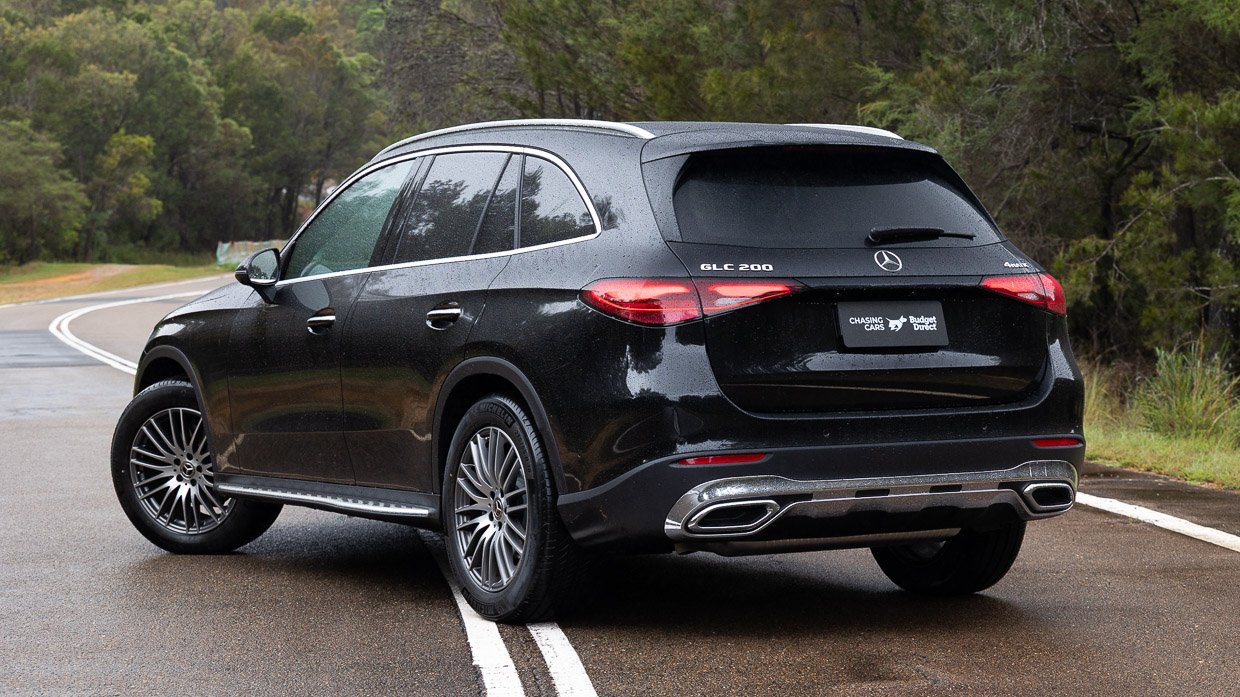
Two years on, the GLC200 is back for the first time in gen-two guise, complete with a not-quite-as-busting 10 percent price hike. The old gen left at $80,800, while the newie is $89,000 as a cleanskin.
Part of the hike is inflationary fiscal creep affecting the entire motoring landscape. And part of it is slicker and techier new-gen updates and, presumably, and the uplift in driver engagement and enjoyment we discovered reviewing the pricier GLC300.
But the headline upgrade is that where the old was rear drive, the replacement is ‘4Matic’ all-wheel drive.
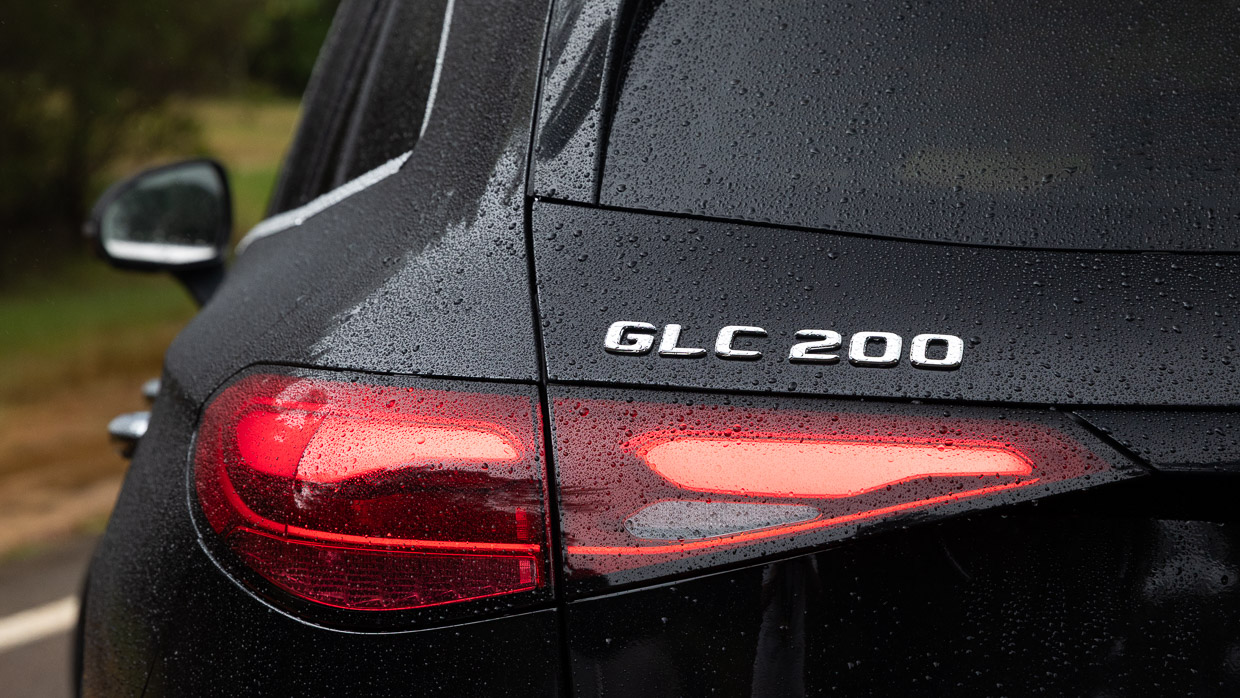
This last bit is a big deal. It makes all-paw traction more affordable in the GLC stable and makes the base version vastly more palatable for regional buyers. More farm-friendly? You bet. More touring capable? Indeed. More suitable for ski trips in Winter…?
So despite the price hike, and all things considered, is the new GLC200 better or worse value? And indeed a breed improved?
And does the most attainable GLC variant deliver enough — at least in isolation — to assert a dominant position in a landscape where mainstream midsize SUV alternatives seem on a constant rise in quality, features and premiumness?
The GLC200 4Matic launched in March 2025 at $89,000 list, or around $95,500 driveaway, in base Avantgarde trim without options. You’ll need to dig around $16K deeper to walk up to the GLC300 wagon ($105,100 list) and quite a bit more for the Coupe ($117,000 list).
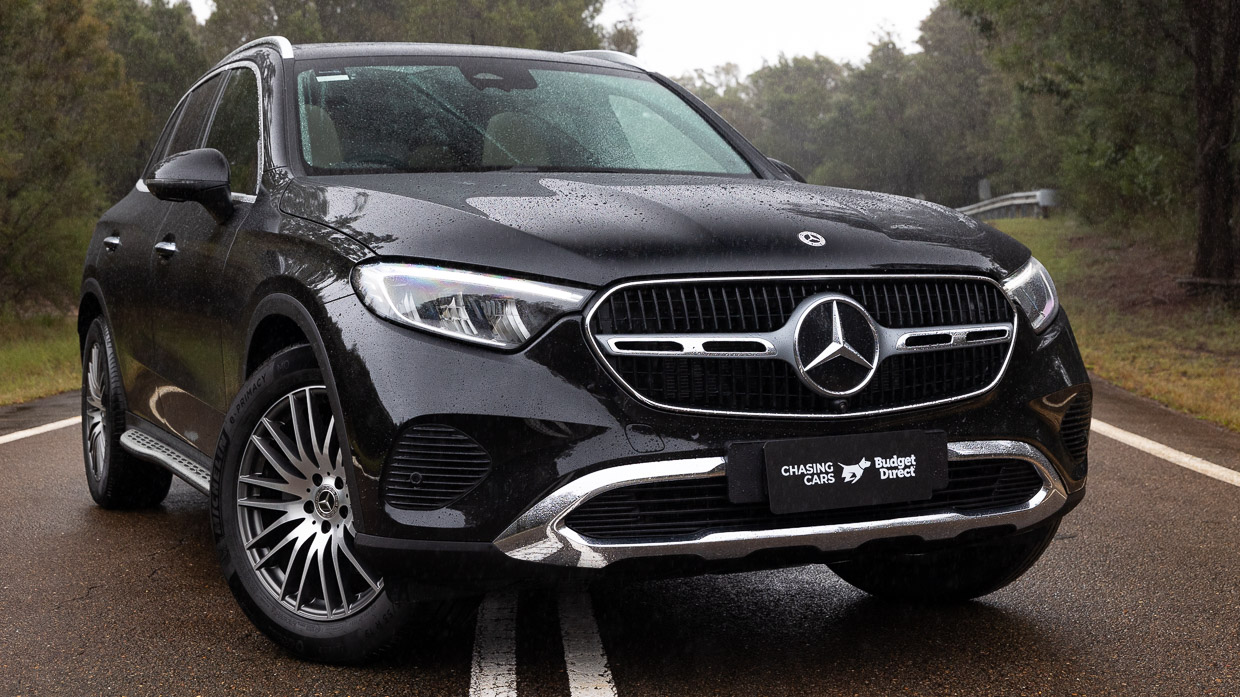
While pricing is up, the outlay commanded is comparable to the likes of the Audi Q5 45 TFSI Sport quattro ($86,527) and the BMW X3 20 xDrive ($86,100).
Standard features for the GLC200 4Matic include:
The GLC200 is available in two standard, five metallic ($846) and three Manufaktur ($2076) exterior colours and a choice of three interior schemes: all-black, Sienna Brown/black and Macchiato Beige/black.
Three cost-optional packages are available. The Plus Package adds Digital Light exterior lighting, heat/noise resistant glass, MBUX ‘augmented reality’, Guard 360 protection, Driving Assistance Plus and Burmester 3D sound for $7600.
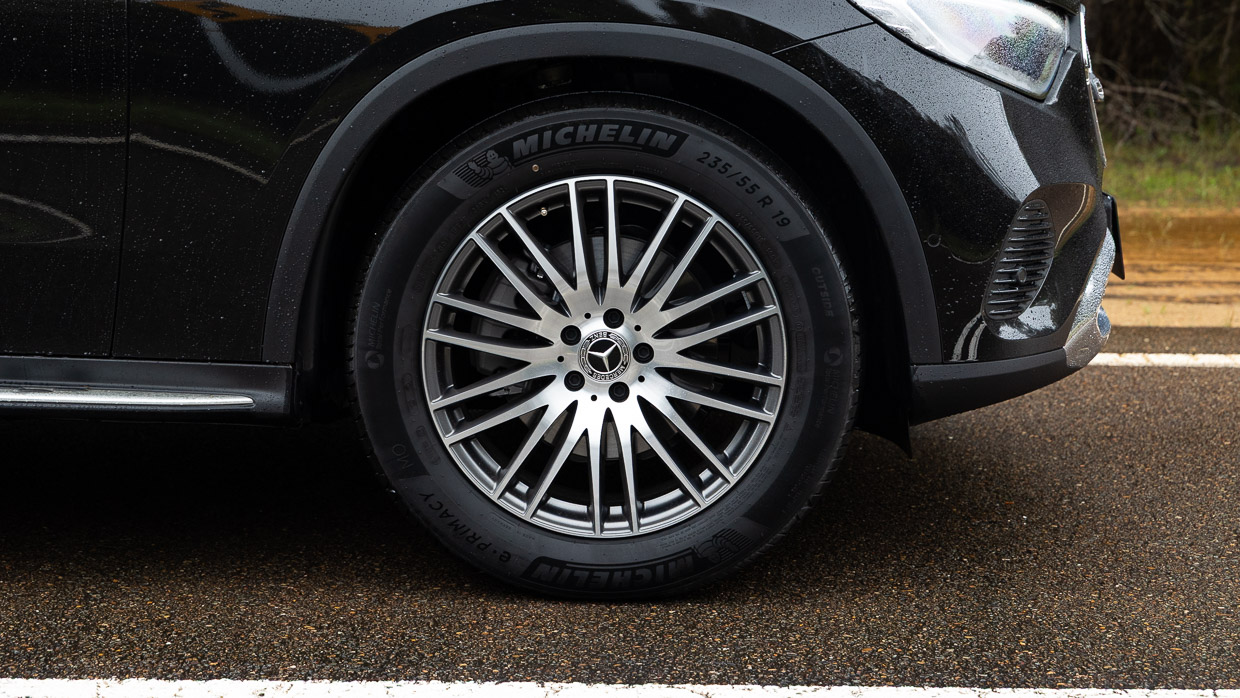
Elsewhere, the Sport Package includes AMG Line exterior and interior restyling, 20-inch AMG wheels, a “sporty engine sound” and wheel arches in body colour at a total outlay of $6000.
A third Night Package features specific AMG 20-inch wheels and black exterior highlights at $1300.
An interesting thing happened in the two years between GLC300 (2023) and GLC200 (2025): Benz stopped referring to its 48-volt augmented powertrain as “hybrid”. Perhaps because it’s not. Instead, the buzzword “electrified”…and it simply adds shady smoke and mirrors to existing confusion…
Here’s the short version. The 2.0-litre turbo petrol four makes 150kW and 320Nm. To this is added a 48-volt Integrated Starter Generator, or ISG, “enhancing engine performance at low RPM” and “enables gliding, boost and recuperation” states the horse’s mouth.
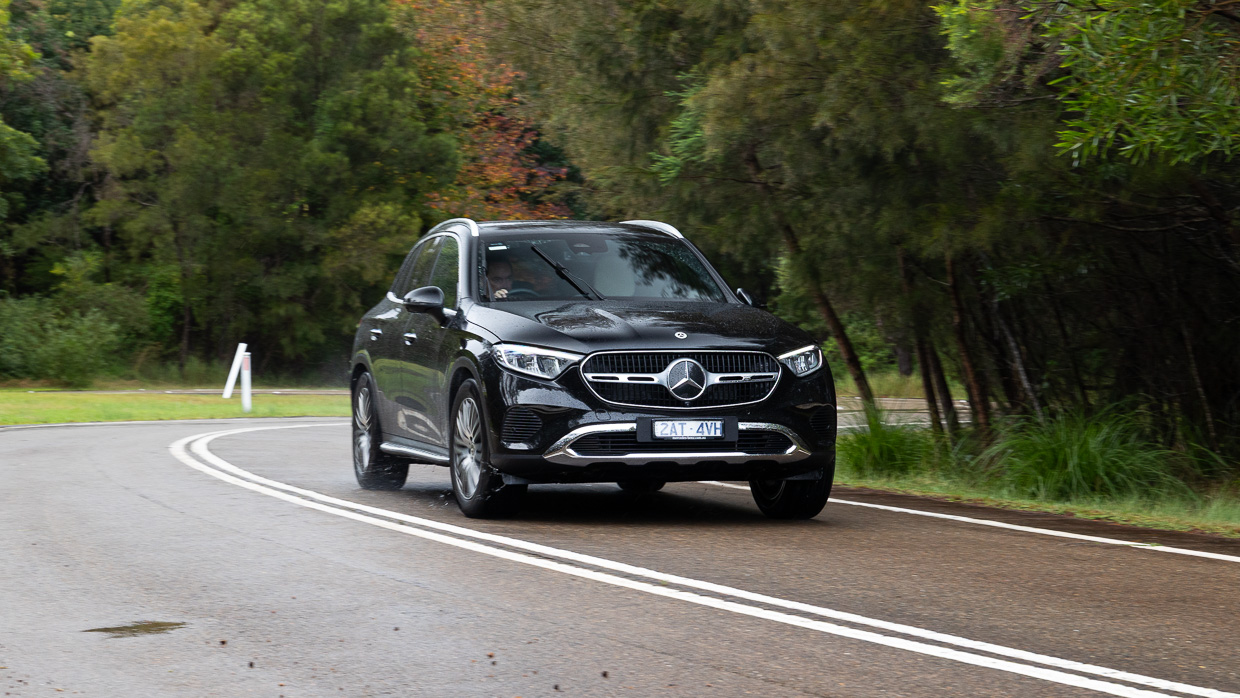
Further, “the ISG adds 17kW and 205Nm to the engine’s standard output” so, of course, 167kW and 525Nm using kindergarten maths.
A bona-fide hybrid, right? Apparently not. The GLC200’s own onboard telemetry, in the MBUX media system, displays peak power and torque outputs of…150kW and 320Nm only.
Further still, the GLC200’s 0-100km/h of 7.8sec is on the money for a two-tonne SUV boasting (only) 150kW and 320Nm. It doesn’t feel anything like 167kW/525Nm, figures Benz doesn’t advertise anywhere because, well, it’s not. “Boost,” you say…?
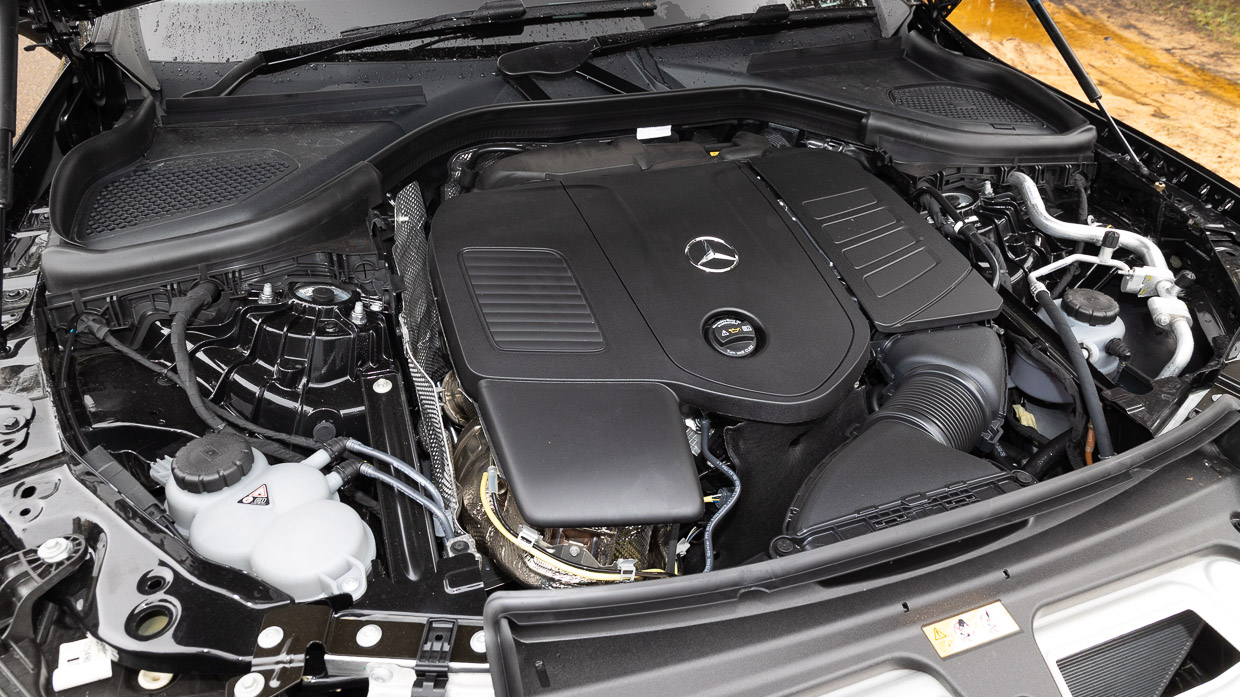
While some gliding/sailing functionality is evident — the engine stops while coasting, sometimes — there appears little benefit the 48-volt ISG brings to fuel consumption, which is mid sevens at best on the open road and around 10 litres neat around town. Electrified, perhaps, if with absolutely no hybrid-like electric drive effect, be it in efficiency or in the tangible experience.
Nor is the pairing of the turbo four and Benz’s proprietary nine-speed automatic transmission all that slick or polished. Response is mediocre at best in anything but sport drive mode, while upshifts are a little consistent: buttery sometimes, sharp at others.
The powertrain tune feels quite lethargic and easy to catch off-guard, particularly when stop-start is activated, and it’s susceptible to a solid pause in drive that’s alarming when you’re attempting to lunge out of a side street into dense moving traffic.
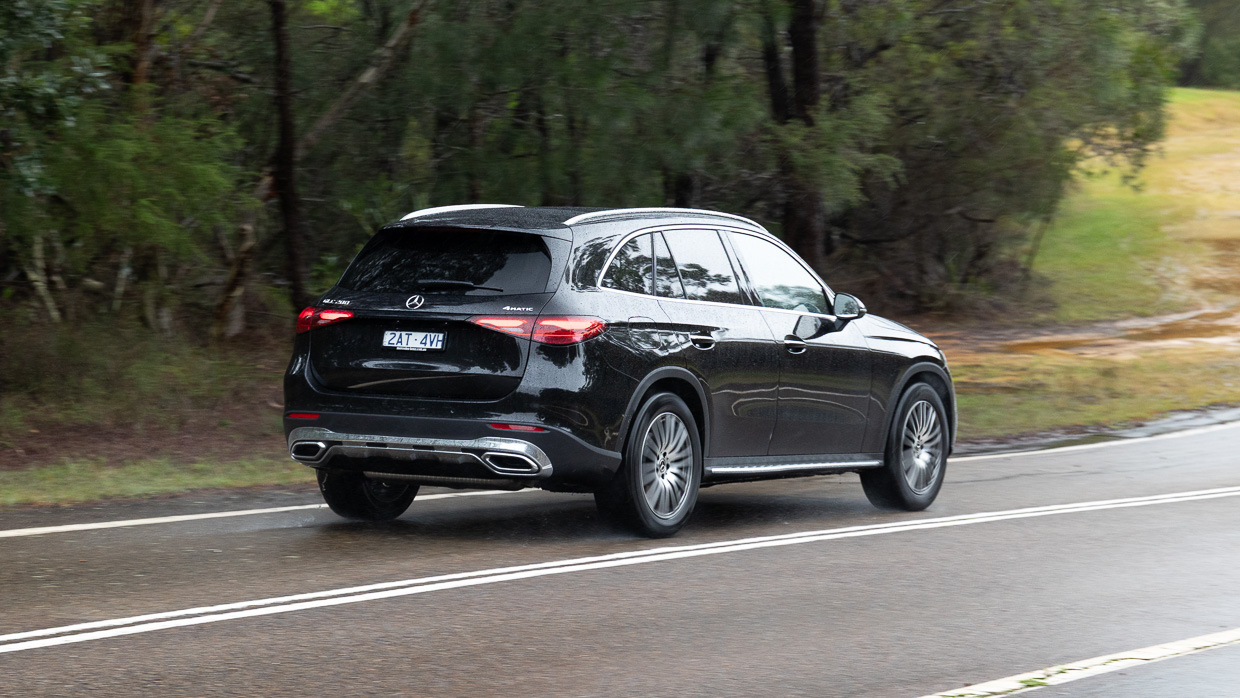
The GLC300, which we happened to sample just after our GLC200 test, also suffers minor response issues and small refinement foibles, though its 190kW and 400Nm shove is far lustier on the boil. And, at 7.7L/100km claims, the pricier variant is only marginally thirstier for what is a considerably headier powertrain.
The mid-size SUV sits on the same MRA2 architecture as the fine-driving C-Class and that pedigree does come swelling up through the chassis at times and at a fairly fundamental level.
Balance, fluidity, and in other driver-centric measures, it’s a fine machine. But in the manners of which most owners will drive the GLC200 most of the time, it’s middling and fairly mediocre.

It fits Agility Control suspension, marketing-speak for two-valve passive damping that’s set soft in vertical movement yet brings added support and body control leaning into corners.
It’s paired with 235mm-wide rubber allround with chunky 55 series sidewalls, rather than the staggered-width (AMG) 20-inch rolling stock.
And soft it is, particularly so across the rear axle. If not to a point where it can smother smaller and finer road acne given that the ride still tends to get fizzy in vertical movement at urban speeds. It’s nice, but not as resolved as one might expect in a mid-size Benz.
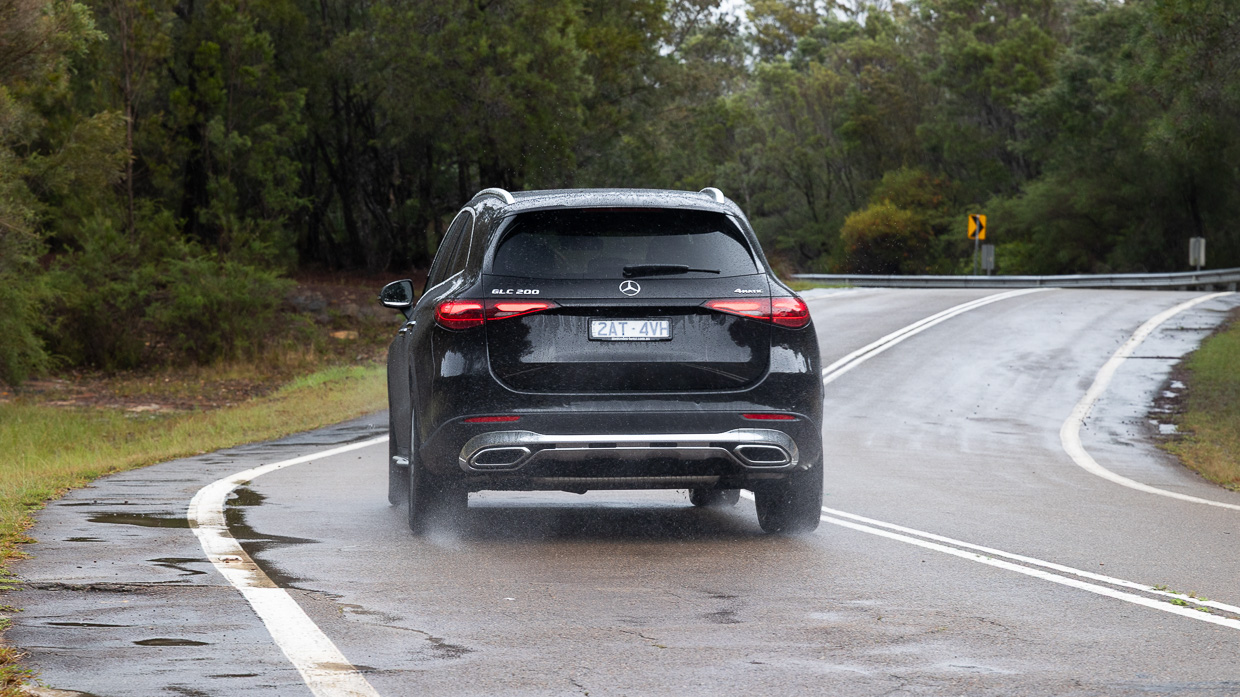
Also present, if oh-so-mildly, is that strange ‘wobble’ that seems to have afflicted every Benz GLC or GLE, be it steel or air sprung, we can remember sampling in the past couple of generations. It’s a faint rocking motion that occurs as each corner rides across an isolated bump, causing a tossing motion that lolls occupants about in their seats.
Strangely, it’s a bit of a Benz exclusive, albeit not something we recall of any technically related C-Class…
But for its various shortcomings, this Avantgarde trim does what the myriad AMG Line-festooned Benz examples Hoovered up by Aussie buyers fails to do: feel like a genuine comfort-leaning experience at its core.
Despite having been dressed in the stolid Avantgarde treatment inside and out, the GLC200’s sombre and conservative exterior wages an aesthetic tussle with the colourful, varied and almost gauche interior design. And for some buyer tastes at least, it gets away with it.
There are plenty of positives. For one thing, there’s not much conspicuous downgrade from the GLC300 fitout, particularly when it comes to material choice and flashy digital window dressing. And the macchiato beige and black combination of our tester looks particularly upmarket.
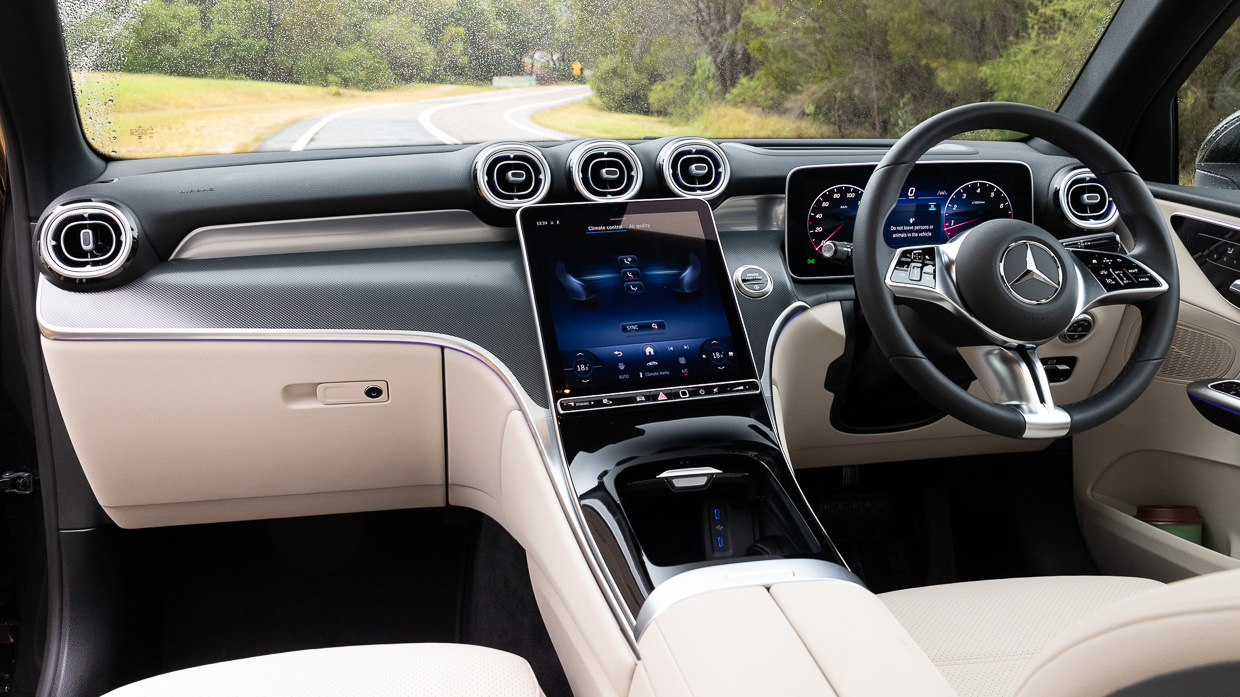
If you’re in it for comfort and luxury vibes, the Avantgarde theme is vastly more suitable and fetching than the (optional) AMG Line.
These luxo-spec seats offer excellent lateral support, yet are relaxed enough to allow changes of posture on long road trips…and don’t have those elephant ear side bolsters that jam the driver’s elbows to restrict arm movement when steering.
The leather-trimmed paddleshifter wheel, too, is much more svelte and classy than the chunky-rimmed AMG tiller. It’s a shame that, in Benz’s mission to rid the cabin space of physical buttons, the haptic slider controls on the wheels are fiddly and inaccurate to use.
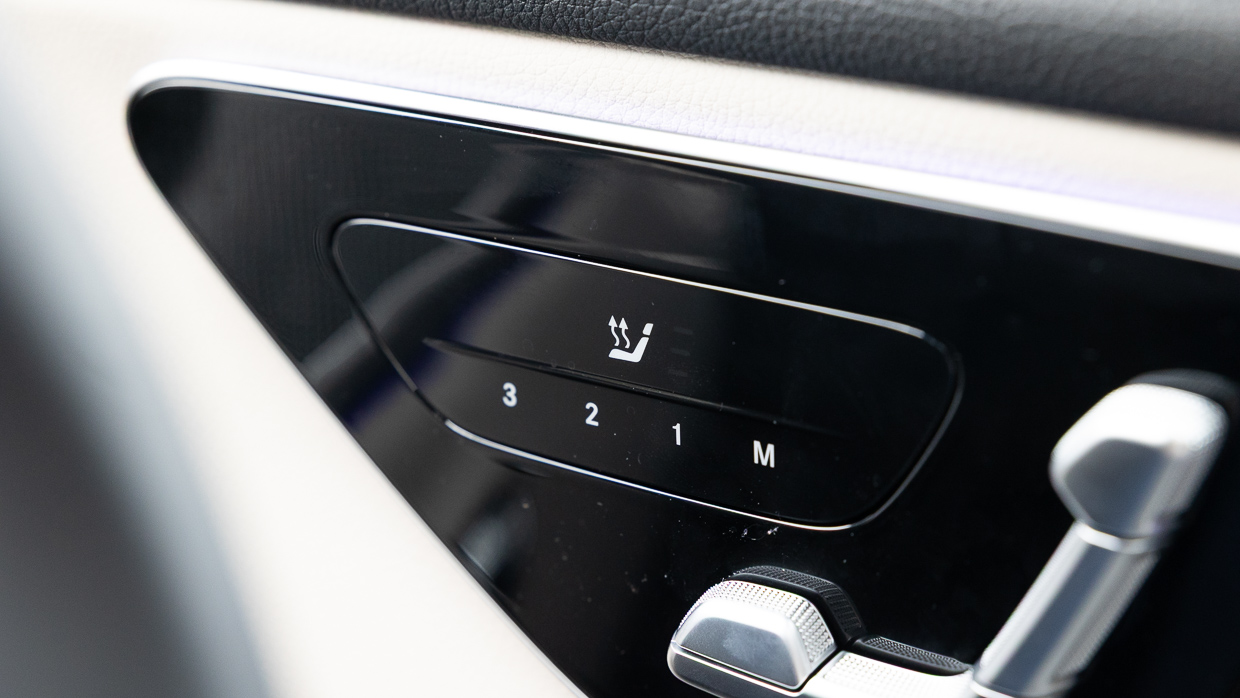
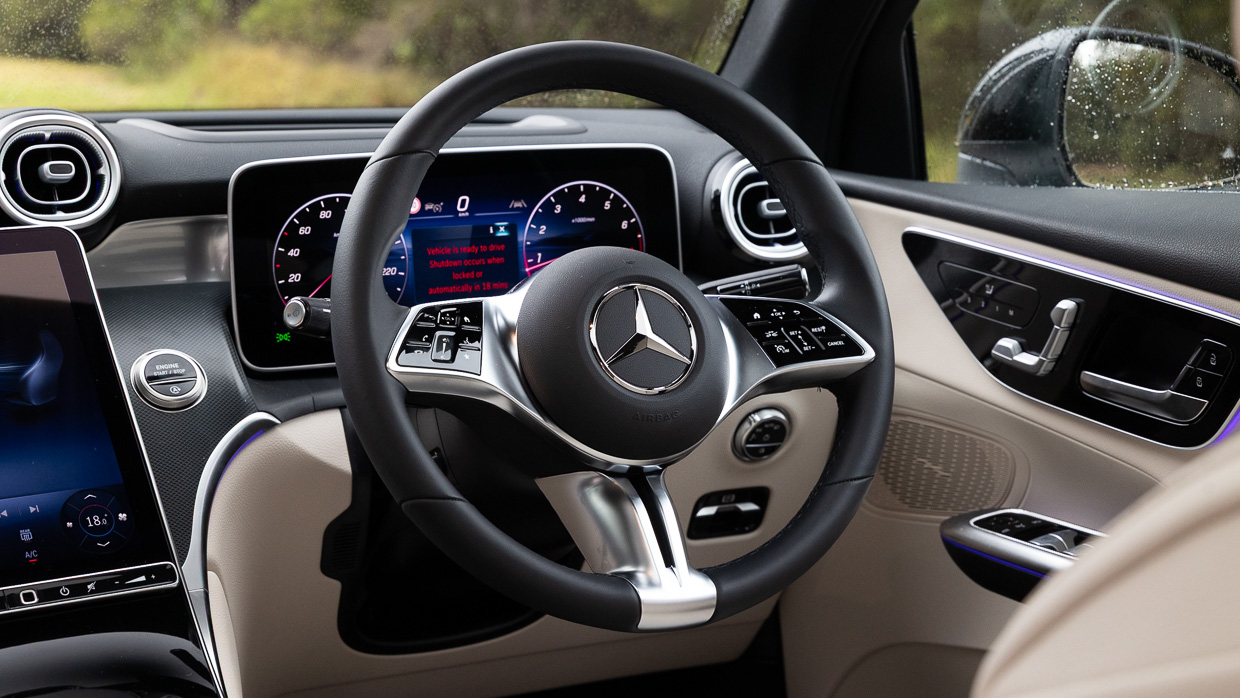
The hard shift in cabin design between fits and second generations is the GLC’s most abrupt change, and while we can see what Benz designers were aiming for — and works well in other models — we’re not sure it hits its mark true here.
The underpinning theme is hard, glassy control surfaces that float atop softer-touch broad surfaces, the two separated by a cushion of luminous mood lighting.
It works well on the door cards and around the overhead control panel…but it falls flat when it comes to the floating media system across the dash fascia, which is minted in diamond-patterned plastic inlays that look lifted from a kitchen appliance.
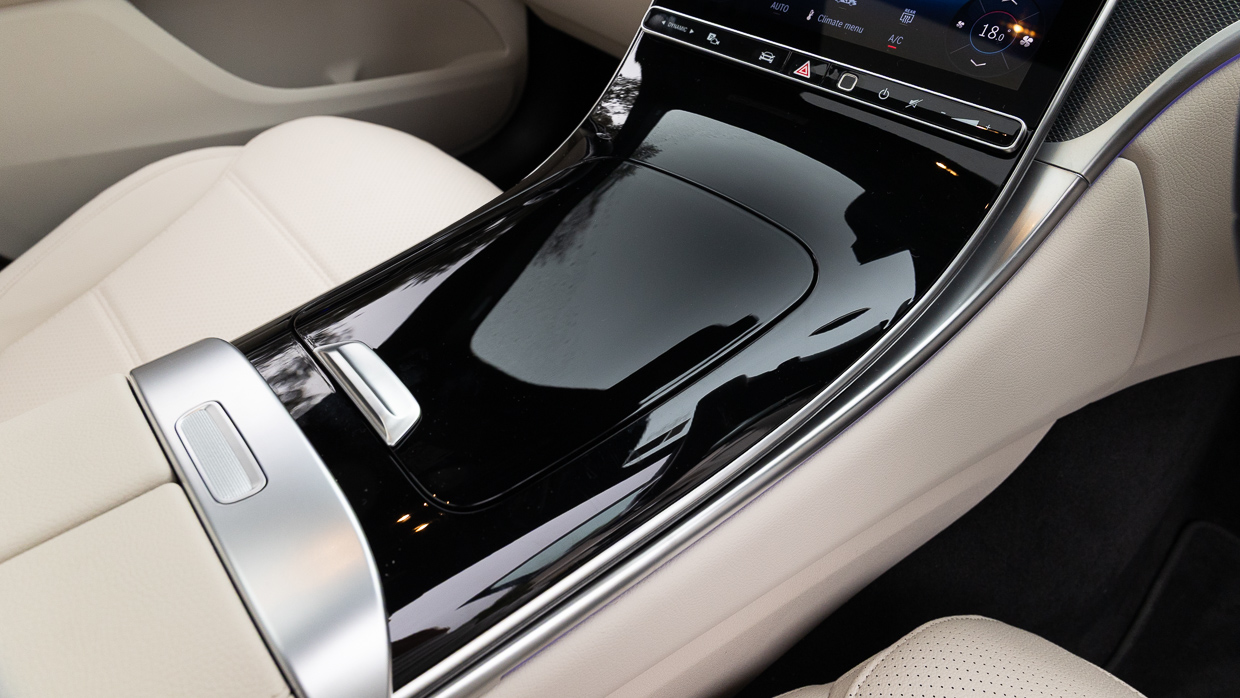
Not helping matters is the overabundance of plasti-chrome detailing and the tired luxo-trope that is piano black, all along the centre console, which is prone to scratching and will blind you with reflection when the sun beams through the panoramic roof on a summer’s day.
Both the (highly configurable) driver’s display and MBUX media screen are almost retina-burning in bold colour and sharp resolution. Once you add the flamboyant mood lighting the net GLC effect verges on being chintzy.
Still, the features are strong, the camera systems are excellent, and the media system in particular is quick and clearly powerful in processing horsepower.
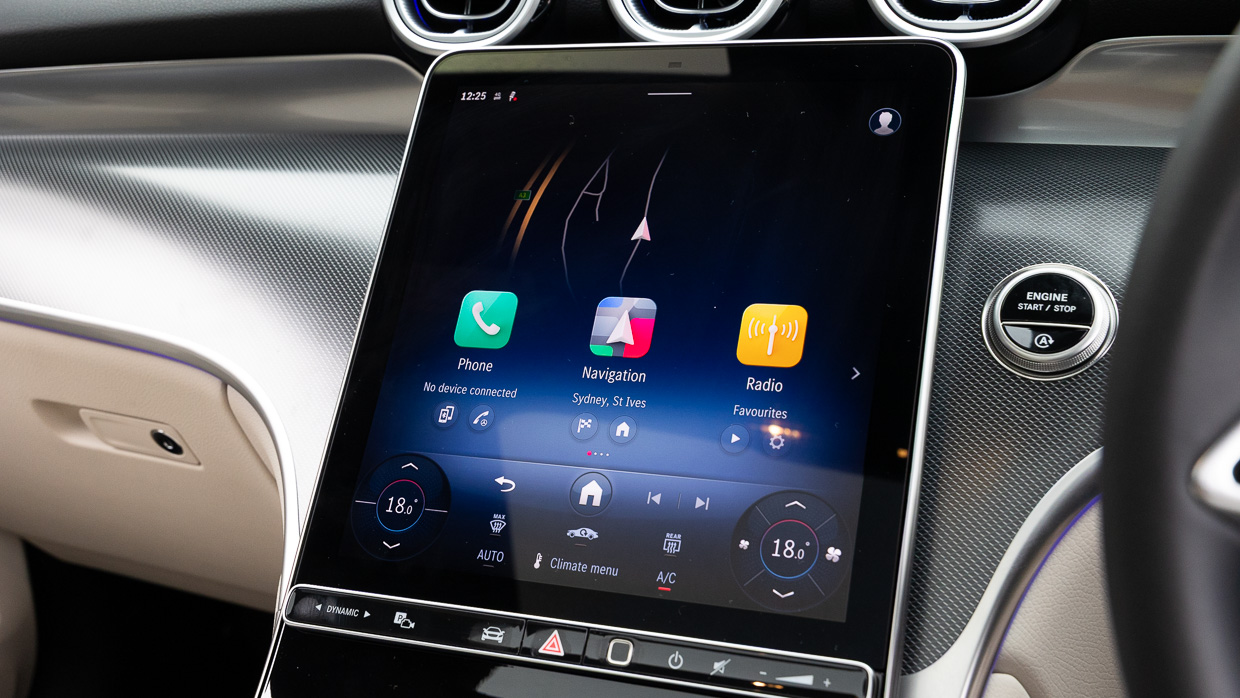
And it’s neat, too, that the HVAC controls live at the bottom of the homescreen rather than being buried in a submenu. However, tilting the screen towards the ceiling is a strange design choice.
Voice control? It’s strangely prone to clumsy errors, responding randomly and mostly incorrectly to unrelated in-cabin speech, trying to affect misinterpreted commands. It does so during in-cabin chatter and, infuriatingly, during phone calls. Benz needs to do better than this.
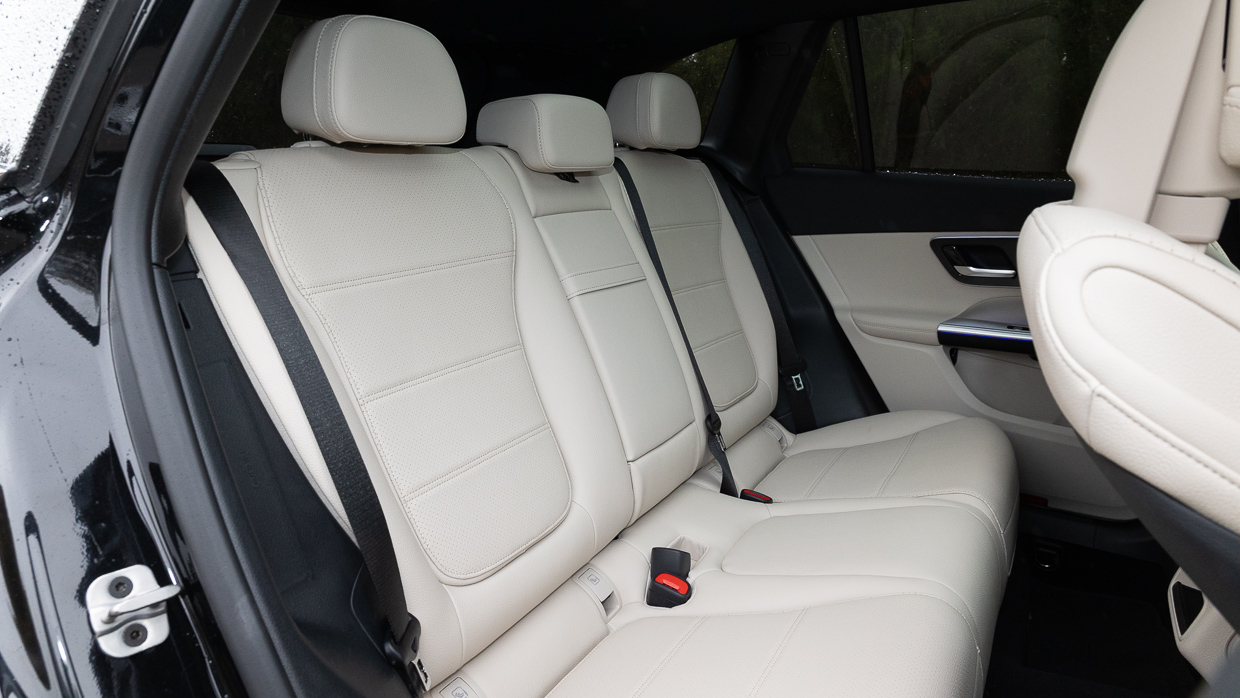
Row two is only moderately roomy and comfortable, though the glass roof and clear viewpoint through to the first row brings a sense of airiness.
But there are some packaging compromises, as there’s precious little space to fit a baby capsule without jamming the front seats forward, while the large tailshaft tunnel robs a lot of foot space.
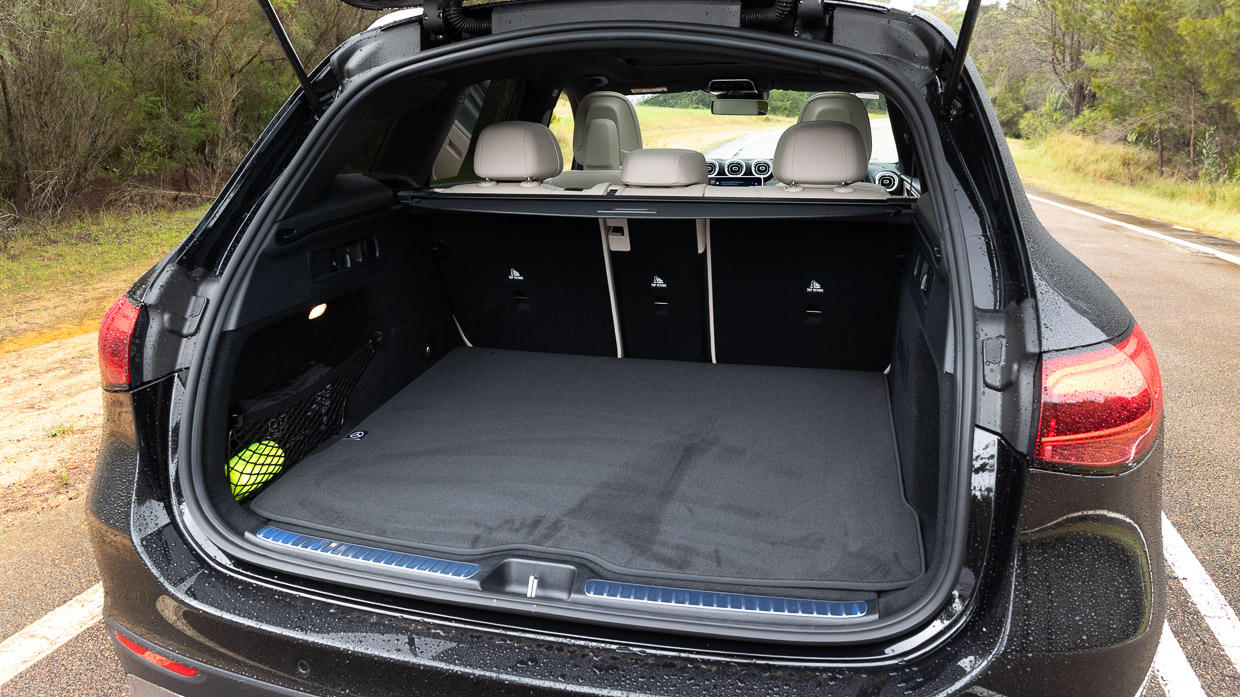
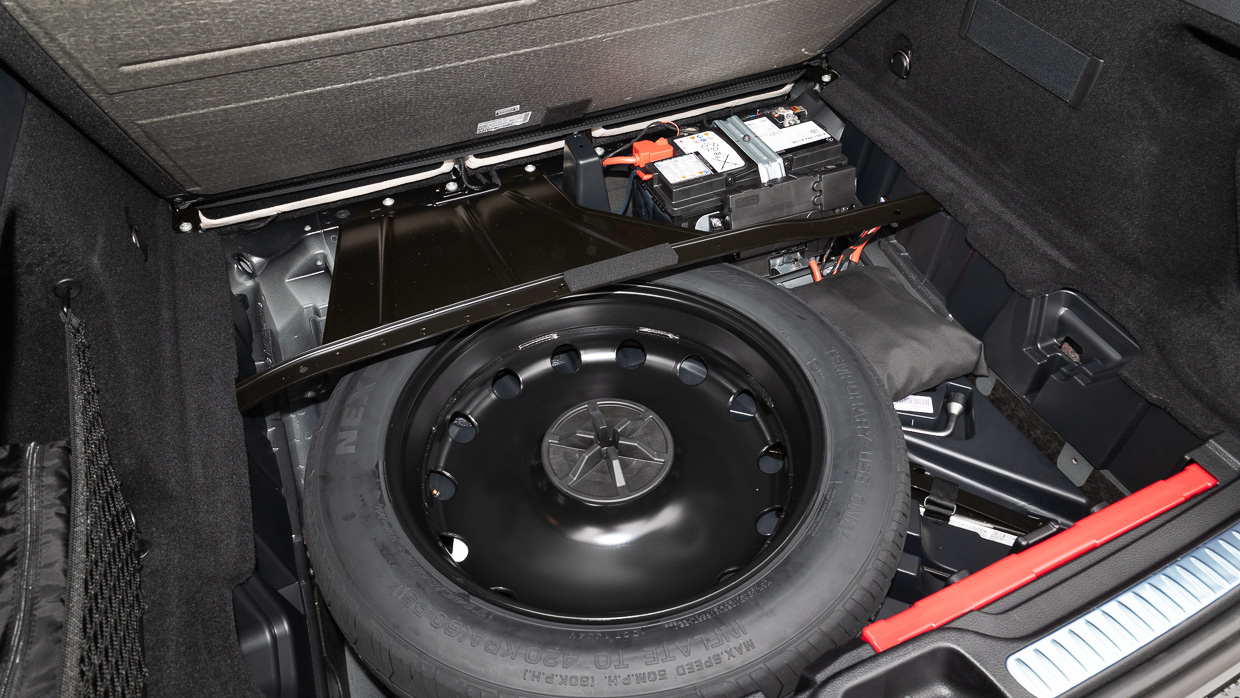
Benz quotes bootspace as 620 litres, which is clearly measured to the cabin ceiling. In effect, it’s an average if usable load space that converts to an advertised 1640L with the handy 40:20:40-split rear seatbacks fully stowed.
The addition of a 12-volt outlet out back is neat and the GLC200 does fit a space saver spare wheel under the floor, enhancing its Aussie touring chops against the alternative of the typically awful goo kit.
Mercedes-Benz’s second-generation mid-size SUV line-up was awarded a five-star ANCAP rating for all variants from testing conducted by Euro NCAP back in 2022.
It scored 92 percent apiece for adult and child occupant safety, with 74 percent for vulnerable road user protection and 84 percent for safety assist.
Features fitted include:
Active safety and assistance performance is, surprisingly, a mixed bag.
On the plus side, restarting the vehicle does not activate any system that annoys, is intrusive or demands to be switched off at the outset of a trip for the sake of the driver’s sanity.
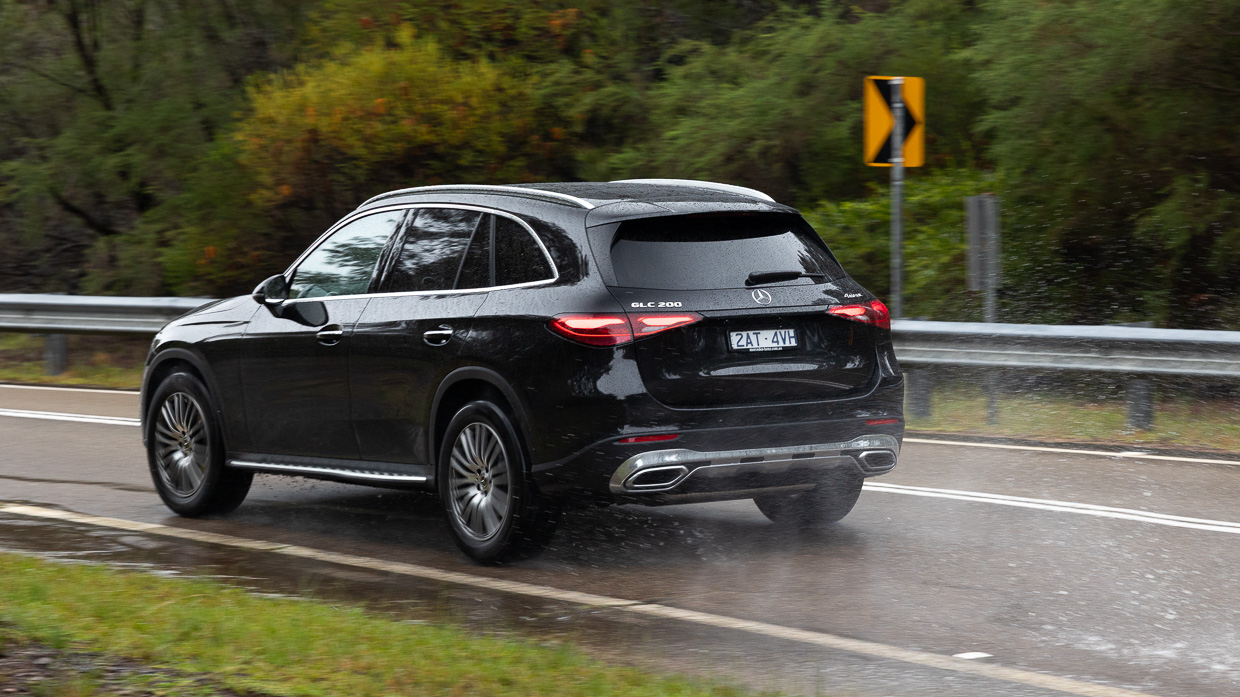
On the downside, it has gremlins. The parking/proximity sensors are prone to constant false positives and triggering in traffic. They’re also conservatively calibrated, sending warnings for objects that are nowhere near the maneuvering vehicle.
Worse is the reversing AEB. Twice during our week the Benz jammed on the brakes while reversing: once into a supermarket carspace, another negotiating the home parking space. And neither incident was for any sound reason.
As mentioned, fuel consumption is less than stellar: mid-sevens on highway and creeping into double figures for urban, against a 7.5L/100km claim (on the iffy NEDC test cycle rather than the more accurate WLTP).
It demands 95RON premium fuel as a minimum.
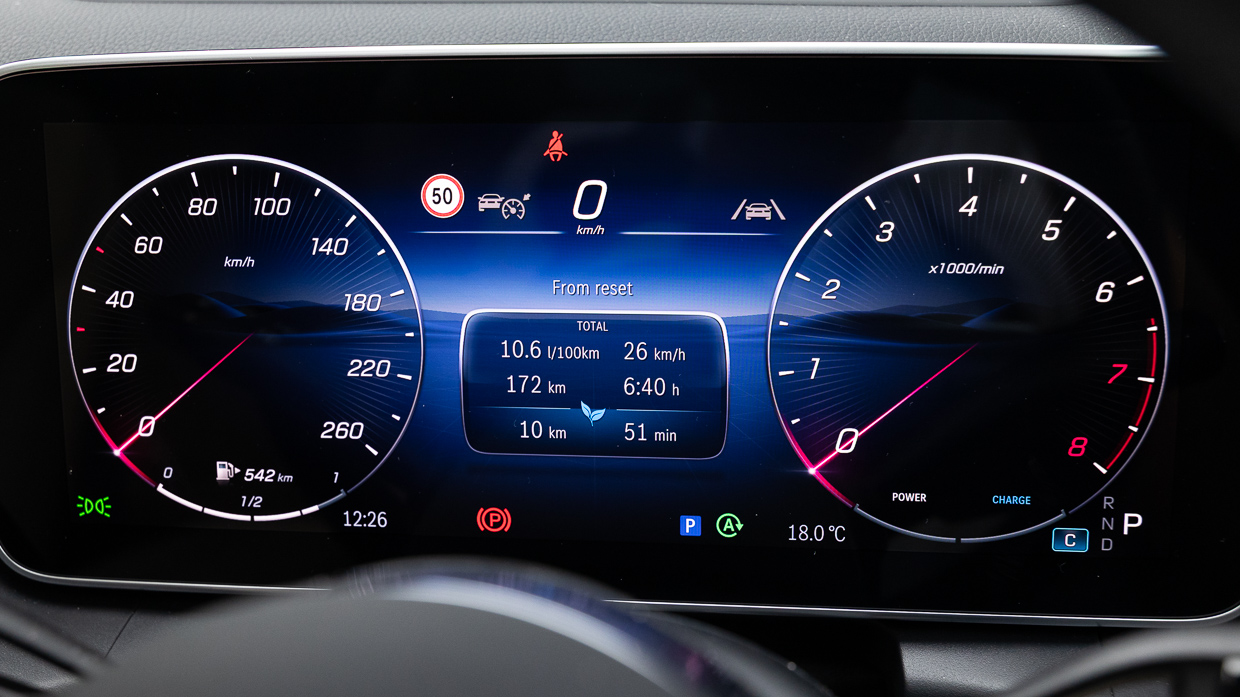
Servicing is every 12 months, with a handy 25,000km between visits if you’re in the habit of clocking up big mileage. However, the five-year servicing bundle is a whopping $7350.
Warranty is a fairly typical five years of unlimited-kilometre coverage.
A more attainable variant is a welcome addition to the GLC line-up, particularly one in fit-for-purpose comfort-themed Avantgrade trim and one that adds all-wheel drive that significantly improves its suitability to a wider buyer set.
While on one hand, the AWD goes some way to justifying the GLC200’s circa $10K price hike in two years — and it makes an all-paw GLC more attainable — it still perches the entry point to mid-size Benz SUV ownership that much higher.
Perhaps the main issue is that, beyond the flash and indulgence it peddles — at least inside — it doesn’t really meet conventional, older-school expectations of a Mercedes-Benz experience when it comes to refinement and general execution. And that’s particularly evident in the behaviour of the powertrain and some of the safety system foibles.
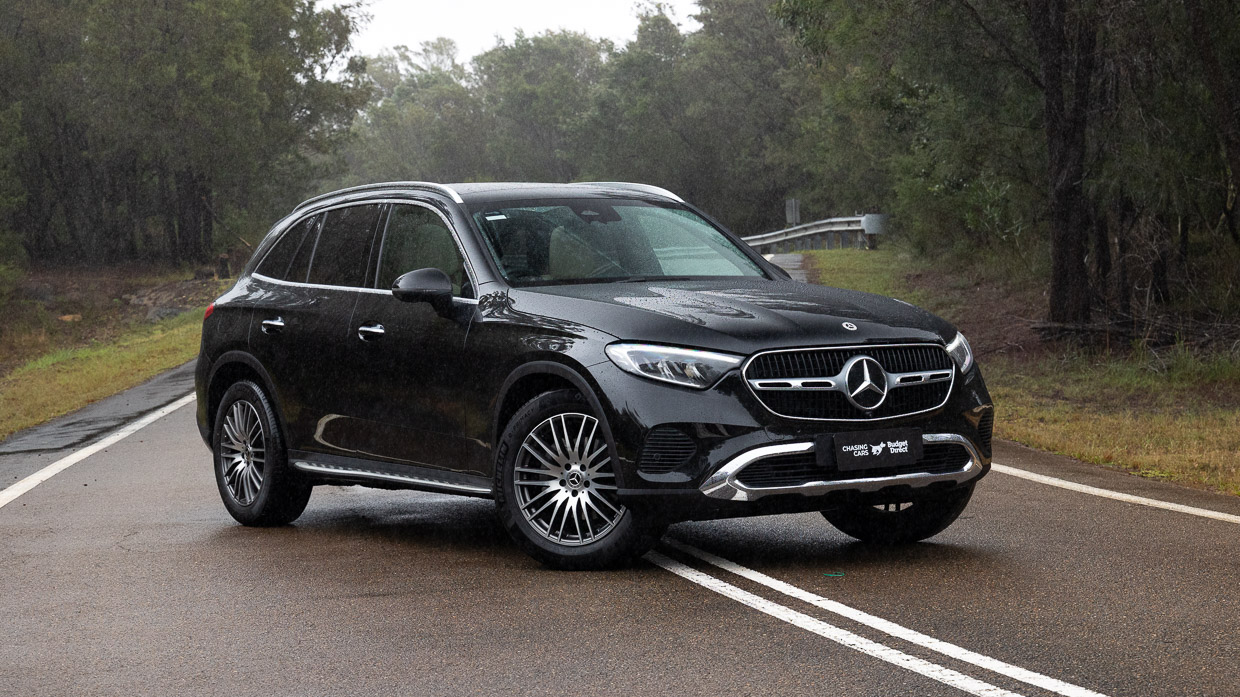
It doesn’t quite feel premium enough and right here is where the GLC200 finds very dangerous territory. And from the likes of the new third-generation Volkswagen Tiguan.
In most respects, the Tiguan 150 Elegance has the measure GLC200: on powertrain, on features, on conspicuous in-cabin tech and how upmarket it feels. The thing is, the VW offers real adaptive (15-way) suspension, real (partial) leather trim, variable steering and the list goes on… And it’s two-thirds the price.
What the GLC200’s German rival lacks is badge cache and for some buyers that Benz tri-star is worth paying a handsome premium for.
Key specs (as tested)
About Chasing cars
Chasing Cars reviews are 100% independent.
Because we are powered by Budget Direct Insurance, we don’t receive advertising or sales revenue from car manufacturers.
We’re truly independent – giving you Australia’s best car reviews.
The estimate provided does not take into account your personal circumstances but is intended to give a general indication of the cost of insurance, in order to obtain a complete quote, please visit www.budgetdirect.com.au. Estimate includes 15%^ online discount.
^Conditions Apply
Budget Direct Insurance arranged by Auto & General Services Pty Ltd ACN 003 617 909(AGS) AFSL 241 411, for and on behalf of the insurer, Auto & General Insurance Company Limited(ABN 42 111 586 353, AFSL 285 571).Because we don’t know your financial needs, we can’t advise you if this insurance will suit you. You should consider your needs and the Product Disclosure Statement before making a decision to buy insurance. Terms and conditions apply.
Indicative quote based on assumptions including postcode , 40 year old male with no offences, licence suspensions or claims in the last 5 years, a NCD Rating 1 and no younger drivers listed. White car, driven up to 10,000kms a year, unfinanced, with no modifications, factory options and/or non-standard accessories, private use only and garaged at night.
^Online Discounts Terms & Conditions
1. Discounts apply to the premium paid for a new Budget Direct Gold Comprehensive Car Insurance, Third Party Property Only or Third Party Property, Fire & Theft Insurance policy initiated online on or after 29 March 2017. Discounts do not apply to optional Roadside Assistance.
2. Discounts do not apply to any renewal offer of insurance.
3. Discounts only apply to the insurance portion of the premium. Discounts are applied before government charges, taxes, levies and fees, including instalment processing fees (as applicable). The full extent of discounts may therefore be impacted.
4. We reserve the right to change the offer without notice.